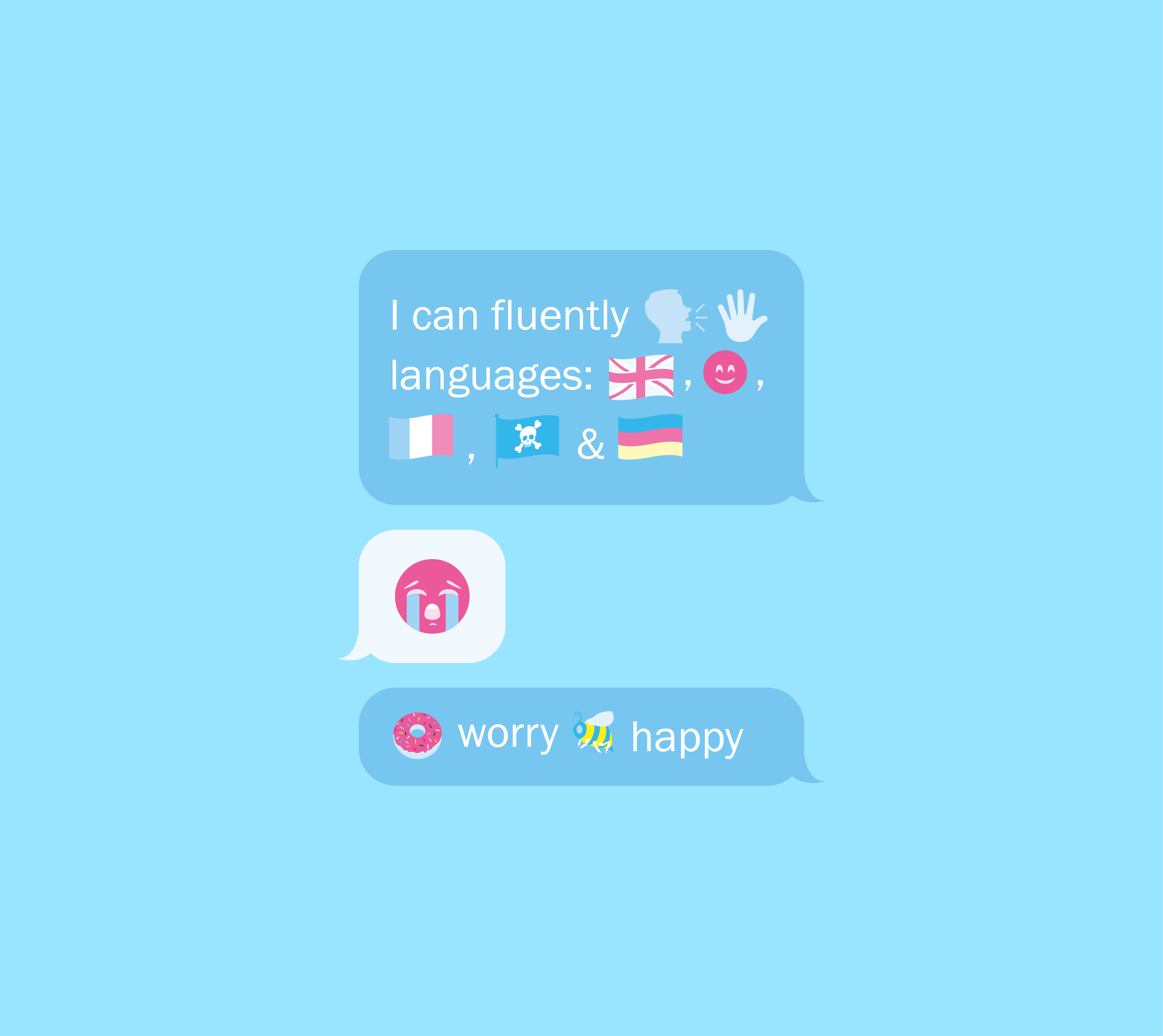For our next Harvard Hero Moment, I’m arguing the use of emoji has transformed the way we communicate with each other.
The simple images that accompany our text-based messages have morphed into a cultural phenomenon, giving rise to the fastest growing visual language in the world, one which transcends borders and tongues.
The Japanese term “emoji” translates as (絵, "picture") + moji (文字, "character") – and can be used to describe the whole practice of sending these delightful icons.
I find our use of emoji in the context of language fascinating. While it can be argued it isn’t
strictly a language, I love that we’ve effectively gone back to painting shapes on stone walls in a digital form.
Emoji allows a visually expressive way to communicate, letting you add context, emotion, and sentiment with ease. Using certain emoji within a sentence can transform its meaning. The insertion of a winking face 😉 / crying with laughter face 😂 / or aubergine 🍆 at the end of a given sentence gives you very different things. 👀
Used by an
estimated 92% of the world’s online population, marketers and communicators have embraced this new medium. Furthermore, according to
Adobe’s 2019 Emoji Trend report more than half of emoji users are more likely to engage with brands that use emoji in their posts.
A brief history of emoji 📜 🏺 🤠
Emoticons – the pre-cursor to emoji – first appeared in Puck magazine as ‘typographical art’ back in 1881.
It took more than hundred years before they would re-emerge when emoticon use became prevalent in online forums and chatrooms, harking back to the early days of the internet.
But when working with just punctuation, things are a bit more…limited. ¯\_(ツ)_/¯
It wasn’t until 1998 when the first set of 176 emoji were created by engineer Shigetaka Kurita – as Japanese phone company NTT Docomo looked for new ways for customers to communicate visually.
Emoji was a hit in Japan, and the big tech players saw an opportunity. In 2007 Google petitioned the Unicode Consortium (the international non-profit group which maintains text standards across computers) to get emoji officially recognised.
A proposal to adopt 625 emoji into Unicode was accepted in 2010 – a move which would soon make them accessible everywhere.
Fun fact: today the Unicode Emoji Subcommittee decides which new emoji we get in every update – and members of the public can submit their ideas for consideration.
An emoji abundance in the modern-day digital lexicon 🌊🙈😍
We’ve seen
emoji used in statements from the White House, you can order a Dominoes by sending a pizza 🍕 on Facebook Messenger, and “emoji” was declared as ‘Word of the year’ by Oxford Dictionary in 2015.
After conquering the world, emoji needs to constantly evolve over screen sizes and different cultures, if it’s to be accessible to all internet users. So with that in mind expect to see greater representation of diversity, plus probably even more of your favourite foodstuffs.
From such humble beginnings, it’s undeniable emoji has transformed the way we interact with each other. 🤜 🎤 ⬇️

